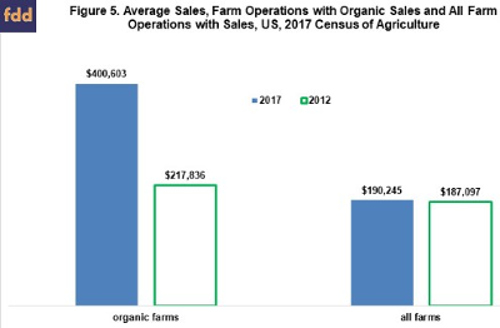By Peter Thomison
Lately I have received questions as to whether corn at various stages of development, especially the blister (R2) and dough stage (R3) stages, will mature before the 50% average frost date. According to the National Agricultural Statistics Service, as of August 18, 37 percent of Ohio’s corn acreage was in the dough stage (R4) compared to 70 percent for the five year average, and three percent of the corn acreage was in the dent stage (R5) compared to 21 percent for the five-year average. Many areas of the state corn are considerably behind the five-year average because of late planting. Late maturation of the corn crop had led to questions about the likelihood for frost damage and whether more fuel will be needed to dry corn.
Physiological maturity (R6), when kernels have obtained maximum dry weight and black layer has formed, typically occurs about 65 days after silking. At physiological maturity (kernel moisture approximately 30-35%), frosts have little or no effect on the yield potential of the corn crop.
Dr. Bob Nielsen has summarized research findings from Purdue University and Ohio State University that provide insight into both the calendar days and thermal time (growing degree days, GDDs) typically required for grain at various stages of development to achieve physiological maturity (kernel black layer, R6). This research was conducted at two locations in Indiana (west central and southeast) and two locations in Ohio (northwest and southwest) with three hybrids representing 97, 105, and 111-day relative maturities planted in early May, late May, and mid-June. The calendar days and thermal time from silking to black layer for the 111-day hybrid maturity are shown in Table 1 from
http://www.agry.purdue.edu/ext/corn/news/timeless/RStagePrediction.html. The calendar days and thermal time from silking to black layer for the 97-day hybrid and 105 maturity are also available from this Purdue webpage.

The study indicated that corn planted in mid-June compared to early May requires 200 to 300 fewer GDDs to achieve physiological maturity. According to Dr. Nielsen, while slightly different responses among the four locations of the trial existed, there did not seem to be a consistent north/south relationship. Therefore, growers can use the results summarized in the following table to "guesstimate" the number of calendar days or heat units necessary for a late-planted field at a given grain fill stage to mature safely prior to that killing fall freeze.
How many GDDs can be expected from now until an average date of a killing
frost for a 111-day hybrid planted in mid-June? To answer this question, estimate the expected GDD accumulation from Aug. 19 until the average frost date (50% probability) for different regions of the state (Table 2). These GDD expectations are based on 30-year historical normals reported by the Ohio Agricultural Statistics Service. The GDD accumulation was calculated using the 86/50 cutoff, base 50 method.
If you want to determine the "youngest stage of corn development" that can
safely reach black layer before the average frost date at a given weather
station, use the information in Table 2 on remaining GDDs in conjunction with
Table 1 which indicates GDDs needed to reach black layer at various
stages of grain fill. Compare "GDDs remaining" for the site with the GDDs
required to achieve black layer depending on the corn's developmental stage.
Table 2. Estimated GDDs remaining from Aug. 9 to the first fall frost for Ohio.
Region | Median Frost Date (50% probability) | Estimated GDDs Remaining From Aug. 19 to Fall Frost |
| | |
Northwest | Oct 10 – Oct 20 | 673 – 723 |
North Central | Oct 10 – Oct 25 | 656 – 741 |
Northeast | Sept 30 – Oct 25 | 603 – 749 |
West Central | Oct 10 – Oct 15 | 716 – 773 |
Central | Oct 5 – Oct 15 | 670 – 796 |
East Central | Sept 30 – Oct 15 | 645 – 763 |
Southwest | Oct 10 – Oct 15 | 752 – 815 |
South Central | Oct 15 – Oct 20 | 841 – 893 |
Southeast | Oct 5 – Oct 15 | 651 - 774 |
If your corn is in the milk stage (R3) as of Aug. 19, will it be safe from frost? Table 1 indicates that corn planted in mid - June required about 681 GDDs to reach black layer from R3 and Table 2 indicates that all regions of the state can accumulate that number of GDDs before the 50% frost date.
However, if your corn is in the blister stage (R2) as of Aug. 19, it might be a different story. The kernel development - GDD accumulation relationships in Table 1 indicate that corn planted in mid-June that is at R2 needs about 781 GDDs to reach black layer. Table 2 indicates that three regions of the state, South Central, Central, and Southwest, accumulate that number of GDDs before the 50% frost date. Several other regions, West Central, and Southeast, come close to accumulating this number whereas, the Northeast, Northwest, and North Central regions are least likely to accumulate the GDDs required to achieve physiological maturity.
The research results in Table 1 demonstrate that late-planted corn has the ability to adjust its maturity requirements, and most of this adjustment occurs during the late kernel development stages. In previous growing seasons when GDD accumulation was markedly less than normal, corn planted by mid-June has usually achieved physiological maturity before the first frost occurred.